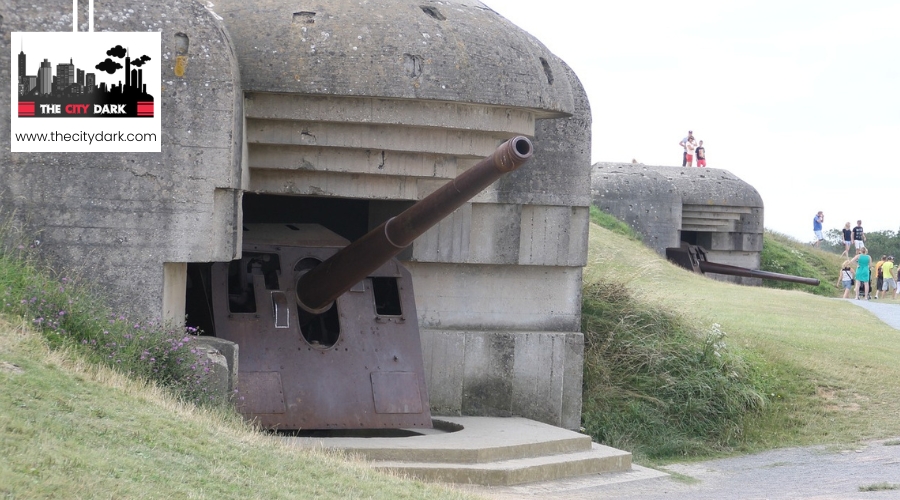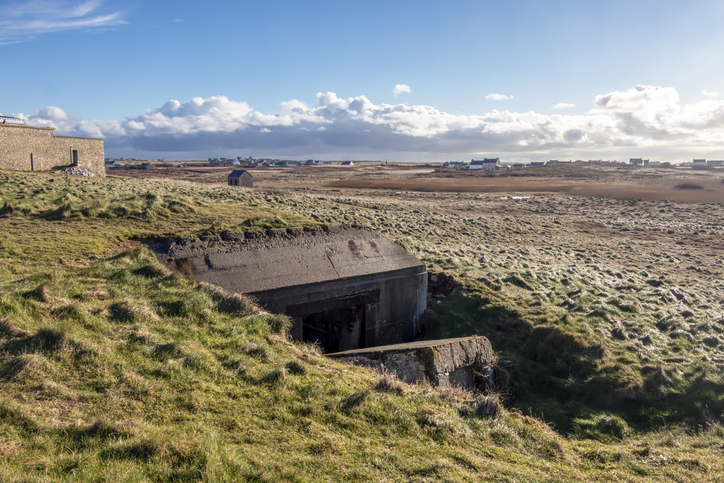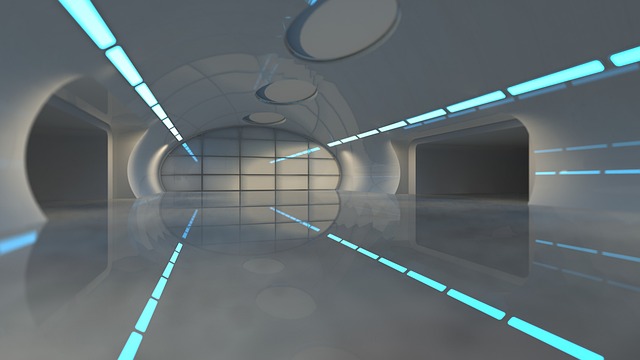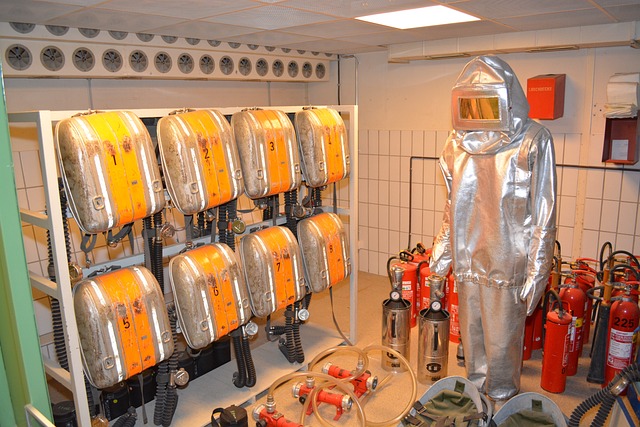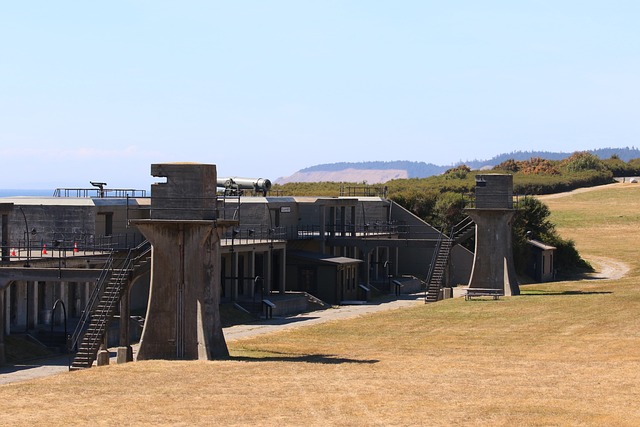You’ve probably heard theories about the indestructibility of modern bunkers, suggesting they could withstand almost anything thrown their way for millennia. But how accurate is this belief?
As you explore the varied factors influencing bunker longevity, such as construction materials, environmental conditions, and maintenance practices, you’ll find the reality is far more nuanced.
While certain metals like copper can enhance durability, and locations with minimal seismic activity offer a more stable environment, the essential role of ongoing upkeep cannot be overstressed. Without regular maintenance, even the most robustly built bunkers may not live up to the lofty expectations of enduring through ages.
As we unpack the complexities behind what determines a bunker’s lifespan, you’ll gain insights into how modern engineering and technological advancements are constantly pushing the boundaries of what’s possible, suggesting an intriguing future for bunker construction and preservation.
Key Takeaways
- Construction materials and techniques, such as reinforced concrete and steel reinforcement, are crucial for ensuring the durability and longevity of modern bunkers.
- Environmental factors, including location selection and material choices, can greatly impact the lifespan of bunkers, with low water presence and high seismic stability being favorable.
- Regular maintenance, inspections, and upkeep are essential for preserving bunker integrity and preventing deterioration.
- Technological advancements have significantly improved the design and longevity of modern bunkers, with features like advanced power systems and renewable energy sources enhancing functionality over extended periods.
Understanding Bunker Durability
While factors like location and corrosion stability play crucial roles, it’s vital to recognize that maintaining a bunker’s integrity demands constant attention and care. You’ll find that reinforced concrete, an essential component in bunker construction, offers substantial protection but isn’t impervious to the ravages of time. Regular checks and maintenance are crucial to prevent the deterioration of concrete, ensuring the structure remains sound for years to come.
Additionally, the installation of blast doors plays a pivotal role in safeguarding the interior from external threats and environmental conditions. These doors must be routinely inspected and maintained to guarantee their operational effectiveness and to seal the bunker securely.
Equally important is the bunker’s filtration system, which ensures that the air inside remains breathable and free from contaminants. This system’s efficiency is paramount for the long-term viability of the shelter, requiring periodic servicing to function correctly. Neglecting this aspect could compromise the safe habitation of the bunker, emphasizing the importance of continuous oversight and maintenance to uphold the durability and operational lifespan of modern bunkers.
Materials and Construction Techniques
Understanding the importance of maintenance in ensuring bunker durability, let’s now focus on the materials and construction techniques that contribute to their strength and longevity.
At the heart of modern bunker construction lies the use of reinforced concrete. This isn’t your everyday building material; it’s a powerhouse of durability, designed to stand up against extreme external forces. By incorporating steel reinforcement, these concrete structures don’t just endure; they resist and fight back against impact and pressure, making them nearly impervious to breaches.
Modern bunkers don’t stop at just concrete and steel. They bring into play blast-resistant materials like Kevlar, fiberglass, and other composites that can withstand high-pressure impacts. These materials aren’t just about defense; they’re about ensuring the bunker remains a safe haven, even in the most extreme conditions.
The construction of these fortresses takes a modern twist with modular construction techniques. This approach doesn’t just speed up the building process; it allows for customization without compromising structural integrity.
And what’s a nuclear-hardened bunker without an advanced ventilation system? These systems ensure that the air remains breathable, and the environment inside is livable, no matter what’s happening outside.
Environmental Impact on Longevity
The environment plays a crucial role in determining how long a bunker can withstand the test of time, with factors like location and corrosion stability at the forefront. If you’re considering the construction or maintenance of a bunker, it’s crucial to select a region with low water presence and high seismic stability. Material choices, such as copper, can significantly enhance corrosion resistance, extending the bunker’s lifespan.
However, the environmental impact on longevity doesn’t stop there. Concrete, while a robust building material, requires specific conditions to maintain its integrity over time. Air filtration systems, critical for sustaining life inside, also face challenges. Maintaining vacuums to preserve air quality is a demanding task; these systems will eventually equalize with the external atmosphere, requiring constant attention to ensure functionality.
Preservation challenges are formidable. Realistically, maintaining an operational state for thousands of years is a near-impossibility. Factors like power supply and sustainability come into play; without a durable, long-lasting power source, the lifespan of machines and, by extension, the bunker itself, is significantly limited.
In essence, while alternate preservation methods exist, such as proximity to glaciers, the environmental impact on a bunker’s longevity remains a complex, multifaceted issue.
Maintenance and Upkeep Essentials
To keep your modern bunker in top condition, you’ll need to establish a routine inspection schedule and employ preventative repair strategies.
By regularly checking on structural integrity, air filtration, and power systems, you can catch issues before they escalate.
This proactive approach ensures your shelter remains safe and functional for years to come.
Routine Inspection Schedule
Establishing a routine inspection schedule is crucial to maintaining your bunker’s operational integrity and readiness. To ensure your modern bunker remains a safe haven, you’ve got to regularly check its structural integrity. This means inspecting walls, doors, and especially blast valves for any signs of wear or damage. Corrosion doesn’t stand a chance if you’re on top of these inspections.
But it’s not just about the structure; your equipment needs attention too. Power systems, air filtration, and water purification units require routine checks to stay operational. Don’t forget to regularly review your emergency supplies, from food storage to medical kits. And, keeping an eye on the bunker’s internal environment—temperature, humidity, and air quality—is essential.
Stick to this routine inspection schedule, and you’ll ensure your bunker is always ready for whatever comes its way.
Preventative Repair Strategies
After setting up your routine inspection schedule, it’s time to focus on implementing preventative repair strategies to keep your bunker in top condition.
Regular maintenance is key to ensuring that bunkers, built to protect, continue to function properly over time. By utilizing corrosion-resistant materials and protective coatings, you’ll combat deterioration effectively.
Don’t overlook the importance of structural inspections to spot and fix any decay or damage promptly. Environmental factors, including water exposure, seismic activities, and atmospheric conditions, play a significant role in the health of your bunker and should influence your preventative repair strategies.
Lastly, hiring professional upkeep services ensures that these strategies are executed correctly, adhering to industry standards, and keeping your bunker ready for whatever comes its way.
Technological Advancements in Design
Recent technological advancements have significantly enhanced the design and longevity of modern bunkers, making them more resilient and sustainable than ever before. These improvements haven’t only capitalized on the latest in construction materials and techniques but have also integrated advanced power systems and renewable energy sources, ensuring that these shelters can maintain functionality over extended periods.
You’ll find that modern bunkers now often feature LED lighting, which isn’t only energy-efficient but also has a longer lifespan, reducing the need for frequent replacements and maintenance. This is just one example of how technological advancements in design are making bunkers more sustainable and easier to maintain in the long run.
Furthermore, luxury doomsday bunkers are being equipped with state-of-the-art technology, offering not just safety but also comfort and luxury, designed to last for generations and withstand natural disasters like earthquakes. Developers are repurposing decommissioned military bunkers and missile silos for prepper communities, reflecting a growing interest in sustainability and societal resilience.
These technological advancements in design are transforming modern bunkers into long-term, sustainable shelters, capable of supporting life comfortably and efficiently for years to come.
Natural Disasters and Bunker Survival
Understanding how bunkers withstand natural disasters is crucial, as these structures are often the last line of defense in extreme conditions. Bunkers built as part of a broader survival strategy are designed with resilience in mind, whether they’re serving as a fallout shelter or a luxury doomsday refuge. The challenges they face include not just the immediate impact of disasters but also the long-term effects on their structural integrity.
Here are three key points to consider:
- Design and Construction: Modern bunkers are protected by blast doors and reinforced structures capable of withstanding severe earthquakes, hurricanes, and other natural catastrophes. The engineering behind these bunkers ensures that they can serve as a reliable fallout shelter when the outside world is inhospitable.
- Maintenance and Upkeep: Continuous maintenance is vital for preserving these bunkers in operational condition. Despite being built to last, they’re not immune to the ravages of time and the elements. Corrosion and decay are persistent threats that require regular attention.
- Sustainability Features: Power supply challenges are significant, especially for bunkers intended for long-term use. Alternative energy sources and sustainability measures are critical for ensuring that these shelters remain functional for years, if not thousands of years, without relying on external power grids.
The Role of Human Usage
You’ve seen how natural disasters test the resilience of bunkers. Now, let’s focus on how you play a crucial role in their longevity.
Your maintenance practices, or lack thereof, along with how often you use these shelters, can significantly affect their operational lifespan. Moreover, human error poses risks that can compromise even the most robustly designed bunkers, underscoring the importance of vigilance and proper usage.
Maintenance Practices Impact
Maintaining modern bunkers involves regular inspections and repairs to ensure their structural integrity and long-term functionality. The impact of maintenance practices on the lifespan of these shelters can’t be overstated. When you consider how human usage and the environment can accelerate wear and tear, it’s clear that a proactive approach to upkeep is essential for preserving the quality and safety of these structures.
Here’s how maintenance practices impact modern bunkers:
- Regular inspections and timely repairs maintain the structural integrity, preventing minor issues from becoming major problems.
- Proper functioning of environmental control systems ensures a habitable and safe environment, essential for the well-being of occupants.
- Preservation of interior amenities guarantees the good quality and functionality of the bunker over time, making it a comfortable and efficient space for its users.
Frequency of Use Effects
While we’ve seen how crucial maintenance is for bunker longevity, it’s equally important to consider how the frequency of human use impacts these structures over time. Modern bunkers, designed to withstand time and elements, still succumb to the wear and tear of constant activity. Without regular upkeep, even the most robust bunkers, like nuclear missile silos, face inevitable decay.
| Impact Factor | Consequence |
|---|---|
| Constant Human Interaction | Accelerates structural wear, requiring frequent repairs |
| Lack of Maintenance | Leads to rapid deterioration, rendering bunkers useless |
| Historical Bunker Decay | Shows significant degradation, emphasizing human impact |
The lifespan of modern bunkers is notably affected by frequency of use effects, underscoring that preservation for thousands of years is a challenging feat.
Human Error Risks
Understanding the role of human usage in bunker lifespan is crucial, as it introduces the risk of accidental damage and neglect that can significantly shorten their operational years. Here are three critical points to consider:
- Accidental Damage: A simple mistake can lead to unintended harm to the infrastructure of modern bunkers, affecting their lifespan.
- Improper Maintenance: Without regular and correct care, bunkers can deteriorate quickly. Human negligence plays a significant role in this process, accelerating the wear and tear.
- Neglect: Failing to attend to the needs of a bunker can lead to its decay, rendering it ineffective over time.
Mitigating human error risks involves establishing strict maintenance protocols and adequately training personnel, ensuring the longevity and functionality of modern bunkers.
Historical Comparisons and Lessons
Examining the past sheds light on how even the sturdiest bunkers face inevitable decay over time, offering crucial lessons for their future preservation. You’ve seen military bunkers from World War II and Cold War eras, designed to withstand massive impacts, yet they show significant signs of degradation after decades. This deterioration isn’t just about the passage of time; it’s a stark reminder of the challenges in keeping these structures operational for thousands of years due to environmental factors and decay.
| Era | Example | Preservation Challenge |
|---|---|---|
| World War II | Nuclear missile silos | Significant decay |
| Cold War | Underground shelters | Long-term operational use |
| Modern Times | Luxury doomsday bunkers | Increasing demand |
Alternate preservation methods, like freezing or burying bunkers in snow and ice, hint at possible solutions, yet they’re more about delaying the inevitable rather than providing a permanent fix. You’ve heard the stories, like a plane from World War II being repaired after being frozen in a glacier for a century. These tales are remarkable yet underscore a critical point: while some artifacts can be preserved, maintaining operational integrity for millennia remains a daunting challenge.
Future Trends in Bunker Construction
As you explore the future of bunker construction, you’ll find that sustainable materials and advanced defense technologies are at the forefront. Innovations in corrosion-resistant materials and cutting-edge security measures are set to redefine how bunkers protect and sustain life. These developments promise not only increased longevity but also enhanced efficiency and safety for inhabitants.
Sustainable Materials Innovation
Exploring sustainable materials innovation reveals future trends in bunker construction, focusing on how new technologies and eco-friendly materials are reshaping the durability and environmental impact of these underground shelters.
The lifespan of modern bunkers is significantly influenced by:
- Location and Stability: Ideal conditions include low water presence and seismic stability to enhance preservation.
- Corrosion Resistance: Innovations in materials like copper, which resists deterioration far better than steel and concrete, are pivotal.
- Maintenance and Preservation: Sustainable materials innovation means rethinking maintenance strategies and preservation methods to minimize upkeep and extend functionality.
These innovations not only promise to extend the lifespan of modern bunkers but also highlight a shift towards more sustainable construction practices, ensuring that these structures can withstand the test of time while minimizing their environmental footprint.
Advanced Defense Technologies
The advent of advanced defense technologies is revolutionizing bunker construction, pushing the boundaries of durability and security. You’re living in an era where war bunkers are not just remnants of the Cold War-era but are evolving into sophisticated shelters, capable of withstanding extreme conditions. This transformation is driven by a combination of factors affecting longevity, such as location, materials, and maintenance strategies that ensure these structures remain intact over time.
| Factor | Impact on Bunkers |
|---|---|
| Location & Seismic Stability | Enhances durability |
| Corrosion Resistance | Prevents material decay |
| Vacuum Maintenance | Preserves internal conditions |
| Power Supply Challenges | Necessitates sustainable solutions |
Advanced defense technologies are setting new standards for bunker construction, ensuring they remain a testament to human ingenuity in the face of adversity.
Preserving Bunkers for Future Generations
Ensuring modern bunkers endure for future generations requires careful consideration of several preservation factors. You’ve got to think about where you’re building these shelters—locations with minimal water exposure and high seismic stability are key. Moreover, using materials that resist corrosion, like copper, isn’t just smart; it’s essential for extending a bunker’s lifespan.
When it comes to preserving bunkers, here are three methods that offer a deeper meaning:
- Regular Maintenance: It’s not just about fixing what’s broken. Regular upkeep ensures the bunker remains functional and doesn’t succumb to deterioration. Neglect it, and you’re left with a shell of what could have been a safe haven.
- Alternate Preservation Methods: Consider freezing bunkers solid or burying them in snow and ice. These unconventional tactics not only preserve the structure but also turn it into a remarkable artifact, much like the well-preserved WWII planes found in glaciers.
- Sustainability Practices: The challenge of maintaining a long-term power supply directly impacts the preservation of furniture and artifacts within. It’s crucial to integrate sustainable solutions to ensure these items survive alongside the structure itself.
Preserving bunkers for future generations means thinking beyond their immediate use. It’s about safeguarding history, ensuring these modern marvels can stand the test of time and continue to tell their stories long into the future.
Conclusion
In conclusion, the lifespan of your bunker largely depends on its location, construction materials, and how well you maintain it. While materials like copper can boost longevity, even the sturdiest bunkers require regular upkeep to stay functional.
Technological innovations and mindful maintenance can extend their life, but don’t expect them to last thousands of years without significant preservation efforts. By learning from the past and embracing future trends, you can ensure your bunker serves its purpose for as long as possible.

